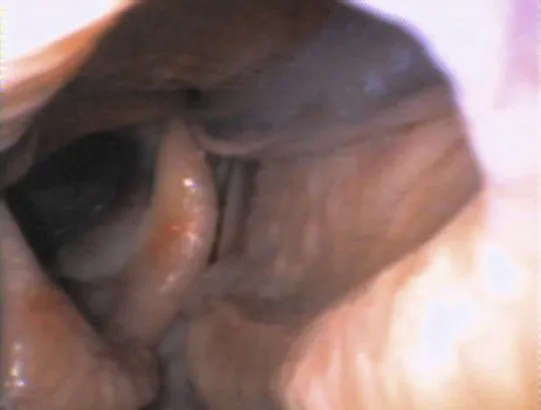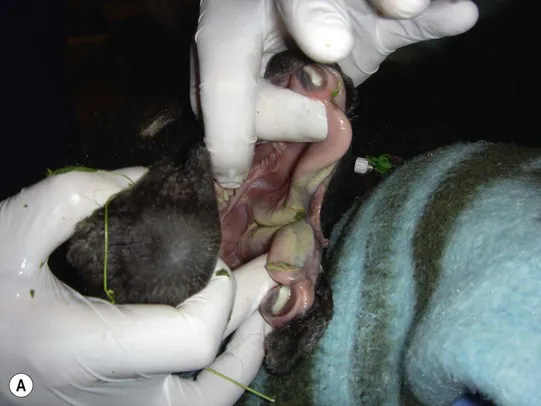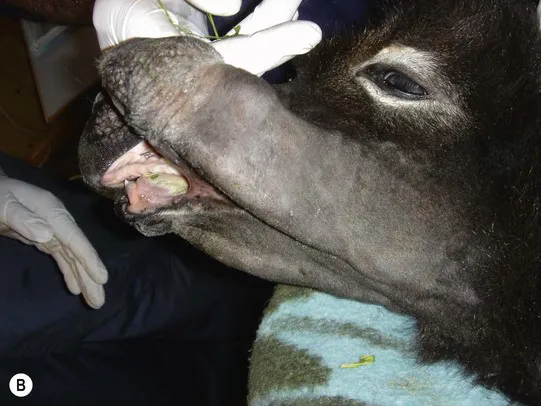
eBook - ePub
Knottenbelt and Pascoe's Color Atlas of Diseases and Disorders of the Horse
Siobhan Brid McAuliffe
This is a test
Buch teilen
- 416 Seiten
- English
- ePUB (handyfreundlich)
- Über iOS und Android verfügbar
eBook - ePub
Knottenbelt and Pascoe's Color Atlas of Diseases and Disorders of the Horse
Siobhan Brid McAuliffe
Angaben zum Buch
Buchvorschau
Inhaltsverzeichnis
Quellenangaben
Über dieses Buch
A unique collection of photographic illustrations of the major equine disorders, providing both qualified practitioners and veterinary students with an invaluable guide to greater diagnostic accuracy, treatment options, and a wider understanding of the processes and signs of equine disorders. The systematic presentation of disorders along with the icon-based key points system of evaluation gives unparalleled ease of access and use. Conditions presented are gathered from around the world, making for a resource of universal application that is a major aid to the rapid visual recognition and interpretation of clinical signs that are vital elements of success in veterinary practice.
- Many new conditions added
- Over 300 new colour illustrations
- Brand new design with icon-based key points boxes.
- Systematic presentation of text with emphasis gives greater ease of access.
- Treatment options and prognoses now included.
- Includes access to online database of all disorders
- Two upcoming top experts brought in to build on the foundation of Derek Knottenbelt and Reg Pascoe's milestone text.
Häufig gestellte Fragen
Wie kann ich mein Abo kündigen?
Gehe einfach zum Kontobereich in den Einstellungen und klicke auf „Abo kündigen“ – ganz einfach. Nachdem du gekündigt hast, bleibt deine Mitgliedschaft für den verbleibenden Abozeitraum, den du bereits bezahlt hast, aktiv. Mehr Informationen hier.
(Wie) Kann ich Bücher herunterladen?
Derzeit stehen all unsere auf Mobilgeräte reagierenden ePub-Bücher zum Download über die App zur Verfügung. Die meisten unserer PDFs stehen ebenfalls zum Download bereit; wir arbeiten daran, auch die übrigen PDFs zum Download anzubieten, bei denen dies aktuell noch nicht möglich ist. Weitere Informationen hier.
Welcher Unterschied besteht bei den Preisen zwischen den Aboplänen?
Mit beiden Aboplänen erhältst du vollen Zugang zur Bibliothek und allen Funktionen von Perlego. Die einzigen Unterschiede bestehen im Preis und dem Abozeitraum: Mit dem Jahresabo sparst du auf 12 Monate gerechnet im Vergleich zum Monatsabo rund 30 %.
Was ist Perlego?
Wir sind ein Online-Abodienst für Lehrbücher, bei dem du für weniger als den Preis eines einzelnen Buches pro Monat Zugang zu einer ganzen Online-Bibliothek erhältst. Mit über 1 Million Büchern zu über 1.000 verschiedenen Themen haben wir bestimmt alles, was du brauchst! Weitere Informationen hier.
Unterstützt Perlego Text-zu-Sprache?
Achte auf das Symbol zum Vorlesen in deinem nächsten Buch, um zu sehen, ob du es dir auch anhören kannst. Bei diesem Tool wird dir Text laut vorgelesen, wobei der Text beim Vorlesen auch grafisch hervorgehoben wird. Du kannst das Vorlesen jederzeit anhalten, beschleunigen und verlangsamen. Weitere Informationen hier.
Ist Knottenbelt and Pascoe's Color Atlas of Diseases and Disorders of the Horse als Online-PDF/ePub verfügbar?
Ja, du hast Zugang zu Knottenbelt and Pascoe's Color Atlas of Diseases and Disorders of the Horse von Siobhan Brid McAuliffe im PDF- und/oder ePub-Format sowie zu anderen beliebten Büchern aus Médecine & Sciences vétérinaires équines. Aus unserem Katalog stehen dir über 1 Million Bücher zur Verfügung.
Information
Chapter 1
Gastrointestinal system
Part 1: The mouth
Developmental disorders
Cleft palate (Figs. 1.1–1.3)
Cleft palate is an uncommon abnormality. When seen it most frequently involves the caudal aspect of the soft palate; however the hard palate, lips and external nares may also be affected. The degree to which it is heritable is not well defined. Foals with large clefts may show dramatic nasal regurgitation of milk during nursing. In some cases, particularly those with relatively small clefts or clefts in the soft palate, nasal return of milk becomes obvious only after feeding and may be relatively minor in amount. Small clefts may not always be easily visible or produce significant nasal return of food and, occasionally, some are only detected after some years, when nasal reflux of grass and more solid food material may be present. Consequent rhinitis and nasal discharges may not be immediately identifiable as resulting from a cleft palate. Occasionally the cleft is sufficiently small to produce no detectable evidence and these are sometimes identified incidentally during clinical or post-mortem examinations. Large palatal defects in young foals have profound effects including failure to ingest adequate amounts of colostrum, starvation and inhalation pneumonia.

Differential diagnosis: Nasal/oral discharge of milk and/or dysphagia may also be seen with:
• Neurologic dysphagia (associated with hypoxic ischemic encephalopathy in foals)
• Esophageal obstruction
• Laryngeal/pharyngeal abnormalities
• Severe weakness/depression.


Diagnosis
• In some cases, diagnosis can be made with a careful oral examination.
• Endoscopy should be performed via both nares. Oral endoscopy may also be required.
• Thoracic radiographs are useful to identify and characterize secondary pneumonia.
Treatment
• Treatment needs to be directed at two main areas, correction of the abnormality and treatment of secondary problems such as pneumonia.
• Treatment of the defect involves one of a variety of surgical techniques. Dehiscence of the surgical site is a common problem. In severely compromised foals, surgery may need to be delayed while secondary problems (pneumonia, sepsis) are addressed. In these situations, feeding via a nasogastric tube or parenteral nutrition is required.
• The prognosis is better in foals with defects only involving the soft palate.
Cleft tongue and mandible (Fig. 1.4A,B)
This condition has been seen in a number of donkey foals. The condition is thought to be heritable. The condition is visually obvious with no differentials. None of the cases to date have been treated as the defects are usually extensive and frequently these foals present with severe secondary complications related to the inability to nurse.


Parrot mouth (brachygnathia) (Figs. 1.5–1.7)
Parrot mouth is a common congenital abnormality characterized by disparity of the lengths of the mandible and maxilla. The mandible is shorter than the maxilla and there is no occlusal contact between the upper and lower incisors. Males are more commonly affected. In the milder cases, the full extent of the discrepancy may not be obvious at birth, becoming more apparent as the permanent incisors erupt and grow into their normal occlusal positions. The failure of significant occlusion results in an increasing overgrowth of the upper incisors and impingement of the mandibular teeth into the soft tissues of the hard palate. Individuals with lesser degrees of inferior brachygnathia may be less affected but the lingual edges of the lower incisors may become sharp and lacerate the gums and hard palate. More commonly the lower incisors tend to prolong the line of the lower jaw and the labial margins of the upper incisors become long and sharp and may lacerate the lower lip. Simultaneously there is usually a discrepan...